Cloudpital # 1 is one of the top RCM is a critical process in healthcare organizations, encompassing all the administrative and clinical functions that contribute to the capture, management, and collection of patient service revenue. The primary goal of RCM is to ensure that healthcare providers are paid accurately and promptly for their services. Here are the key stages of the RCM process:
Click to Start Whatsapp Chatbot with Sales
Mobile: +966547315697
Email: sales@cloudpital.com
Cloudpital # 1 RCM

Patient Registration and Scheduling
Patient Information Collection
The RCM process begins with the collection of patient information during registration. Accurate patient demographic and insurance information is essential for the billing process. This includes the patient’s name, address, contact information, insurance details, and any other relevant data.
Scheduling Appointments
Efficient scheduling systems help to streamline the registration process. Proper appointment scheduling ensures that patient visits are well-organized and that necessary information is collected beforehand. This reduces the likelihood of errors that can lead to claim denials or delays in payment.
Insurance Verification and Pre-Authorization
Insurance Eligibility Verification
Before services are rendered, it’s crucial to verify the patient’s insurance coverage. This involves checking whether the patient’s insurance is active and what services are covered under their plan. Verification ensures that the provider is aware of the patient’s eligibility for services and can prevent potential claim rejections.
Pre-Authorization
Certain medical procedures and treatments require pre-authorization from the insurance company. Obtaining pre-authorization involves submitting relevant patient information and the proposed treatment plan to the insurer for approval. This step is vital to avoid denials and ensure that the healthcare provider will be reimbursed for the services.
Patient Encounter and Documentation
Service Delivery
During the patient encounter, healthcare providers deliver the necessary medical services. Accurate documentation of the services provided is essential for the subsequent billing process.
Clinical Documentation
Detailed clinical documentation is crucial for coding and billing purposes. RCM must accurately document diagnoses, treatments, and procedures. Comprehensive documentation supports the medical necessity of the services rendered and ensures accurate coding.

Medical Coding
Assigning Codes
Remote Patient Monitoring involves translating the clinical documentation into standardized codes used for billing purposes. Common coding systems include ICD (International Classification of Diseases) for diagnoses and CPT (Current Procedural Terminology) for procedures. Accurate coding is essential for claim submission and reimbursement.
Compliance with Regulations
Coders must ensure that the codes assigned comply with current coding guidelines and regulations. Incorrect or inappropriate coding can lead to claim denials, audits, and potential legal issues.
Charge Capture
Capturing All Charges
Charge capture involves recording all billable services provided to the patient. This includes services performed by physicians, nurses, and other healthcare professionals. Ensuring that all charges are captured accurately is critical for maximizing revenue.
Avoiding Missed Charges
Missed charges can result in significant revenue loss. Implementing automated charge capture systems can help minimize the risk of missing billable services. These systems integrate with electronic health records (EHR) and billing systems to ensure comprehensive charge capture.
Claim Submission
Preparing Claims
After coding and charge capture, the next step is to prepare the claims for submission to insurance companies. Claims must include accurate patient information, insurance details, codes, and charges.
Electronic Claim Submission
Submitting claims electronically can expedite the billing process and reduce errors. Electronic claim submission ensures that claims are sent to the appropriate payer quickly and efficiently. Many healthcare organizations use clearinghouses to facilitate electronic claim submission and manage claim status.
Claim Management and Follow-Up
Monitoring Claim Status
Once claims are submitted, it’s essential to monitor their status regularly. Claim management systems can track claims through the submission process, identify any issues, and ensure timely follow-up.
Addressing Denials and Rejections
If a claim is denied or rejected, it’s crucial to investigate the reason and take corrective action promptly. Common reasons for denials include incorrect coding, missing information, or eligibility issues. Addressing these issues quickly can prevent delays in payment and improve cash flow.
Payment Posting
Receiving Payments
When payments are received from insurance companies and patients, they must be posted accurately to the patient’s account. Payment posting involves recording the payment amount, date, and any adjustments or write-offs.
Reconciliation
Reconciling payments ensures that the amounts received match the expected reimbursements based on the submitted claims. Discrepancies must be identified and addressed to ensure accurate financial reporting.
Patient Billing and Collections
Patient Statements
After insurance payments are posted, any remaining balance is billed to the patient. Accurate and timely PMS statements are essential for effective collections. Statements should clearly outline the services provided, insurance payments, and the patient’s responsibility.
Collection Process
Managing patient collections involves following up on unpaid balances and offering payment plans if necessary. Efficient collection processes help to minimize outstanding receivables and improve cash flow. Implementing automated payment reminders and online payment options can enhance the collection process.
Reporting and Analytics
Financial Reporting
Generating regular financial reports is crucial for monitoring the effectiveness of the RCM process. Key metrics include days in accounts receivable (AR), claim denial rates, and collection rates. These metrics help identify areas for improvement and track financial performance.
Data Analytics
Advanced data analytics tools can provide insights into the revenue cycle and help healthcare organizations optimize their processes. Analytics can identify trends, predict potential issues, and support decision-making to enhance revenue cycle performance.
Conclusion
The RCM process is complex and multifaceted, involving numerous stages that require careful management and coordination. By understanding and optimizing each stage, healthcare organizations can ensure timely and accurate reimbursement, improve cash flow, and enhance overall financial performance. Implementing advanced technologies, such as electronic health records, automated billing systems, and data analytics, can further streamline the RCM process and support continuous improvement. Ultimately, an efficient RCM process is essential for the financial health and sustainability of healthcare organizations, enabling them to provide high-quality care to their patients.
Click to Start Whatsapp Chatbot with Sales
Mobile: +966547315697
Email: sales@cloudpital.com
What are the key stages of the RCM process? similar software solutions prices were updated on 2025-11-19T07:58:46+00:00 in Saudi Arabia in Mecca, Medina, Riyadh, Khamis Mushait, Yanbu, Jeddah, Dammam, Unaizah, Uqair, Ha’il, Ta if, Al Bahah, Dhahran, King Abdullah Economic City, Najran, Diriyah, Qatif, Khafji, Jubail, Abqaiq, List of Cities and Towns in Saudi Arabia, Ras Tanura, Turubah, Jazan Economic City, Knowledge Economic City, Medina, Khobar, Abha, Tabuk, Saudi Arabia, similar software solutions prices were updated on 2025-11-19T07:58:46+00:00 We also provide in Saudi Arabia services solutions company in Hafar Al-Batin, Udhailiyah, Al-Awamiyah, Hofuf, Hautat Sudair, Buraidah, Tayma, Duba, ‘uyayna, Saihat, Al-Kharj, Al-ula, Jizan, Rumailah, Ar Rass, Arar, Shaybah, Al Majma’ah, Rabigh, Dhurma, Haradh, List of Saudi Cities by Gdp Per Capita, Badr, Sudair Industrial City, Baljurashi, Shaqraa, Al-Khutt, Habala, Ad Dawadimi, Dawadmi, Layla, similar software solutions prices were updated on 2025-11-19T07:58:46+00:00 Price is SAR 100 and this was updated on updated on 2025-11-19T07:58:46+00:00 similar What are the key stages of the RCM process? software solutions prices were updated on 2025-11-19T07:58:46+00:00 in Saudi Arabia in Haql, Afif, Al-Abwa, Farasan, Al-Jaroudiya, Thadig, Al-Thuqbah, Al Wajh, Almardmah, Al-Zilfi, Muzahmiyya, Prince Abdul Aziz Bin Mousaed Economic City, Tharmada’a, Skaka, Um Al-Sahek, Sharurah, Tanomah, Bisha, Dahaban, Al Qunfudhah, Qurayyat, Saudi Arabia, Ha’ir, as Sulayyil, Al Lith, Turaif, Al-Gway’iyyah, Samtah, Wadi Ad-Dawasir, Az Zaimah, Safwa City, Jalajil, Harmah, Mastoorah, Hotat Bani Tamim, Jabal Umm Al Ru’us, Rafha, Qaisumah, Al-Ghat, Hajrah, Al-Hareeq. Excerpt: Jeddah (also spelled Jiddah, Jidda, or Jedda; Arabic: Jidda) is a Saudi Arabian city located on the coast of the Red Sea and is the major urban center of western Saudi Arabia similar software solutions prices were updated on 2025-11-19T07:58:46+00:00 Price is SAR 100 and this was updated on updated on 2025-11-19T07:58:46+00:00
6-24-2024



